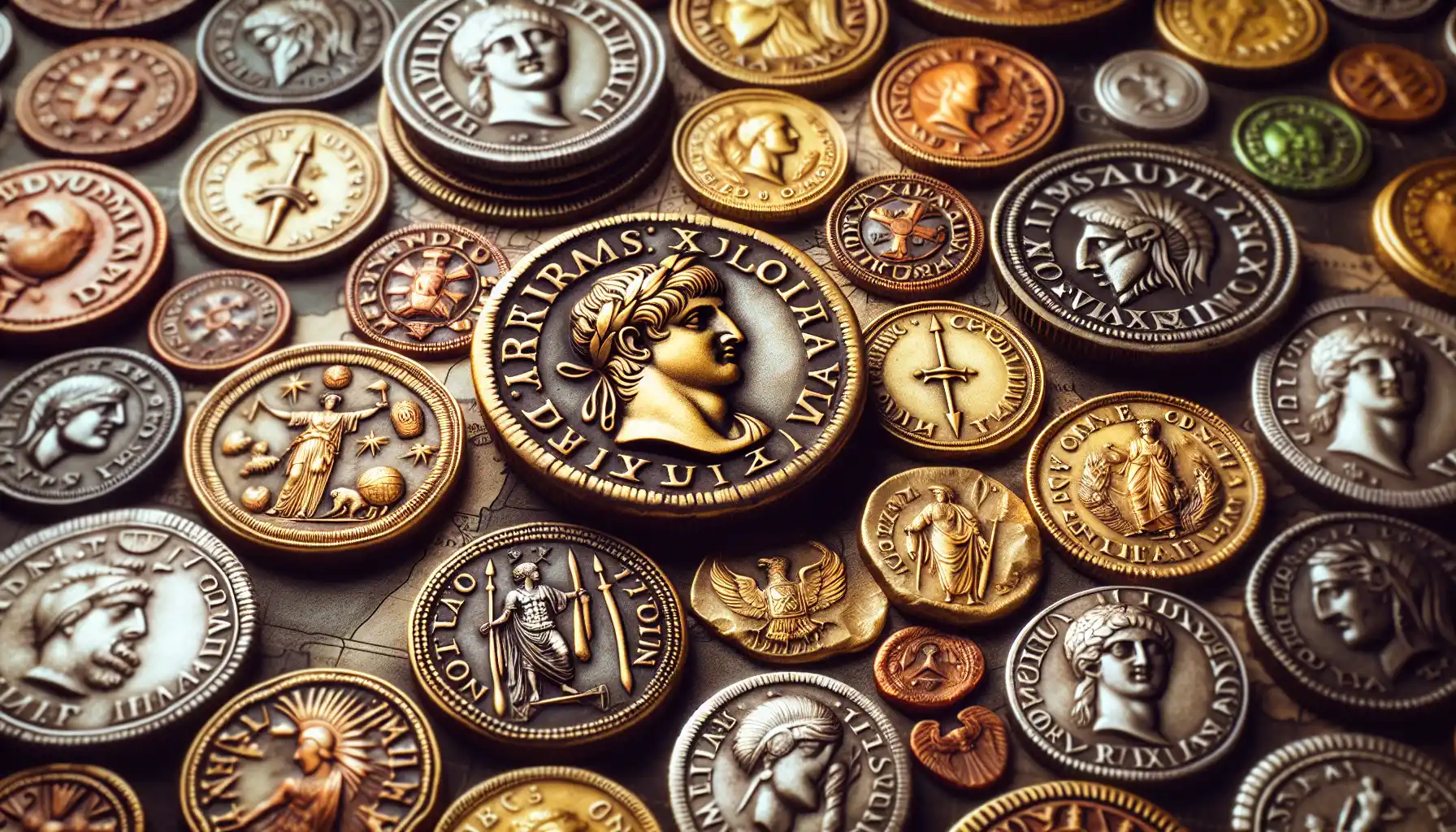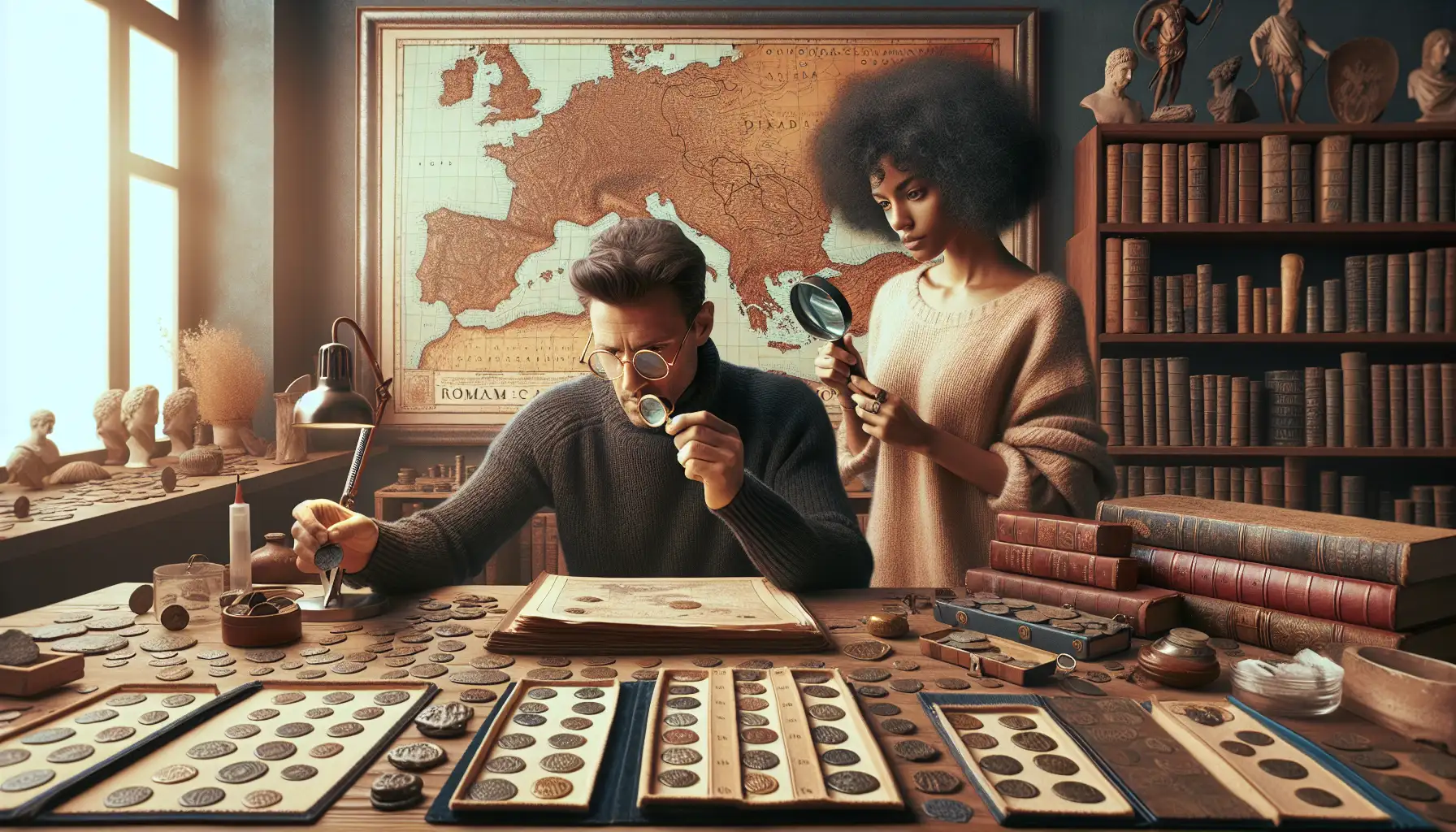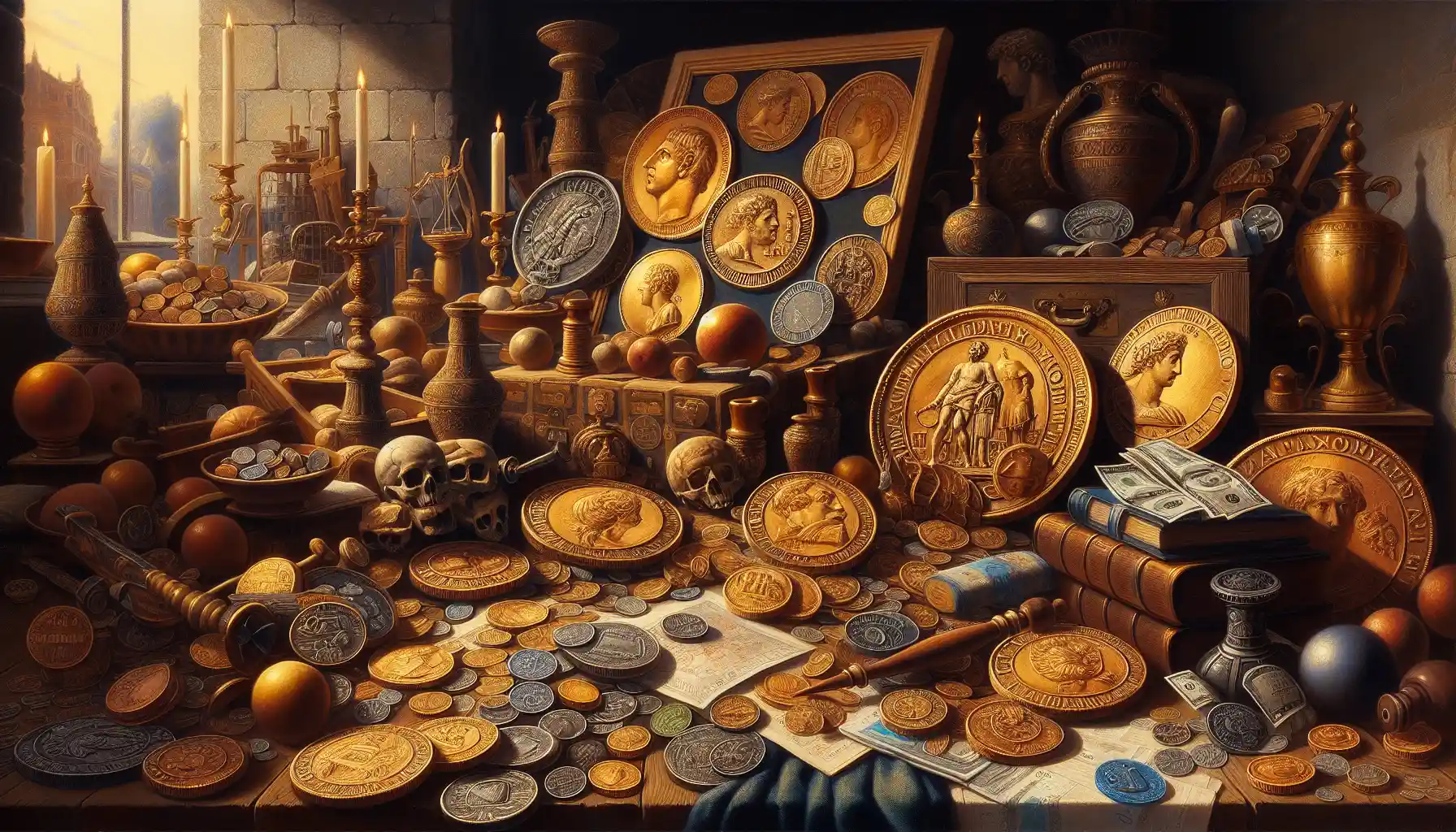Exploring Roman Coins: A Historical and Numismatic Journey
The Origins and Evolution of Roman Coinage
How It All Began: The Birth of Roman Coinage
Picture this: a bustling Roman marketplace, merchants shouting their wares, and coins exchanging hands with the clink of metal. Before Rome’s coinage took center stage, trade relied on bartering or foreign currency. But as Rome expanded, so did its need for a standardized monetary system. Enter the first Roman coins, the humble
aes rude—unshaped lumps of bronze that were more practical than pretty.
Around the 4th century BCE, the Romans leveled up with the introduction of the
aes signatum, rectangular bronze bars stamped with designs like animals and tools. These early coins weren’t just currency—they were works of art, each one whispering stories of Roman life and values. By the 3rd century BCE, the
aes grave emerged, the first round coins, featuring bold designs like eagles and gods, paving the way for a new era of currency.
- Aes rude: Raw bronze chunks, primitive but effective.
- Aes signatum: Bronze bars stamped with symbolic images.
- Aes grave: Round, heavy coins that felt substantial in hand.
These weren’t just coins; they were the lifeblood of a growing empire, each one carrying the weight of Rome’s ambitions.
Key Features and Symbolism in Roman Coins

Decoding the Stories Etched in Metal
Imagine holding a piece of history in your hand, a small but mighty Roman coin. These coins weren’t just currency; they were miniature storytellers. Every detail—from the emperor’s stern profile to the intricate symbols—whispers tales of power, belief, and ambition. But what exactly do these ancient treasures reveal?
Take a closer look. That fierce eagle perched on a laurel wreath? It’s not just decoration. It screams victory and dominance, a nod to Rome’s military conquests. Or how about the goddess Fortuna, gracefully standing with her cornucopia? She’s not there by accident; she embodies prosperity and luck, values Romans held dear.
- Julius Caesar’s face boldly minted on a denarius was revolutionary—it was the first time a living Roman appeared on currency!
- Symbols like a ship’s prow or a clasped handshake often hinted at alliances or naval triumphs.
The craftsmanship is astonishing. You can almost see the hands of ancient artisans, painstakingly engraving these symbols. They weren’t just making coins; they were immortalizing legacies. Isn’t it fascinating how something so small could carry such monumental significance?
Famous Roman Coins and Their Historical Significance

The Denarius of Julius Caesar: A Coin That Changed Everything
Hold it in your hand—or imagine doing so—and you’re not just holding a coin. You’re gripping a piece of history that sent shockwaves through the Roman world. The
Denarius of Julius Caesar, minted in 44 BCE, isn’t just famous; it’s legendary. Why? Because this was the first time a living Roman dared to put their face on a coin. Bold, right?
Picture it: Caesar's profile, crowned with laurel, staring confidently into eternity. Around him, the inscription “CAESAR DICT PERPETVO” (Dictator for Life). This wasn’t just currency; it was propaganda, a statement, a warning. It whispered—no, shouted—to Romans, “I am here to stay.”
What makes it even more fascinating? Its timing. This coin circulated mere weeks before Caesar’s assassination. Imagine paying for bread or wine with it, unaware you were holding the symbol of a brewing political storm.
Key details to spot on an authentic piece:
A finely detailed laurel wreath.
Sharp lettering, often slightly off-center due to ancient minting methods.
Owning or even seeing this coin feels like shaking hands with history.
Collecting Roman Coins: Tips and Insights

Unearthing the Charm of Roman Coin Collecting
Holding a Roman coin is like grasping a fragment of ancient history in your hand. Each piece tells a story—of emperors, gods, battles, and empires that once dominated the world. Whether you're a seasoned numismatist or just dipping your toes into this fascinating hobby, collecting Roman coins can feel like embarking on a treasure hunt through time.
Imagine finding a coin minted during the reign of
Emperor Augustus, the very man who ushered in the Pax Romana. Or perhaps a denarius featuring
Julius Caesar, struck shortly before his dramatic assassination. These aren’t just coins—they’re windows into lives lived thousands of years ago.
If you're starting your collection, consider these tips:
- Focus on a theme, such as coins from a specific emperor or era.
- Research the coin’s history—it adds depth to its value and charm.
The thrill lies not just in owning these artifacts but in uncovering their secrets. Each scratch and engraving whispers tales of markets, soldiers, and citizens who once exchanged them.
The Legacy of Roman Coinage in Modern Times

Echoes of the Roman Empire in Modern Coinage
Have you ever held a modern coin and wondered about its roots? The influence of Roman coinage is like an ancient whisper, echoing through time and still shaping the coins jingling in your pocket today. It’s not just history—it’s living legacy.
Roman coins were revolutionary, blending artistry, propaganda, and practicality. Look closely at your country’s coins. Do you see the faces of leaders? That’s a tradition borrowed straight from Rome, where emperors immortalized their power in silver and gold. Even the use of Latin inscriptions—those cryptic little letters—is a nod to Roman ingenuity.
Here’s something fascinating:
- The size and weight standards of Roman coins laid the groundwork for many modern monetary systems.
- Symbols like laurel wreaths, eagles, and scales of justice? Those are direct descendants of Roman designs.
But it’s not just about aesthetics. Roman coins also carried stories, marking events like military victories or public reforms. Next time you glance at a commemorative coin, think of how it mirrors this ancient storytelling tradition. Isn’t it incredible how something so small can carry centuries of meaning?





